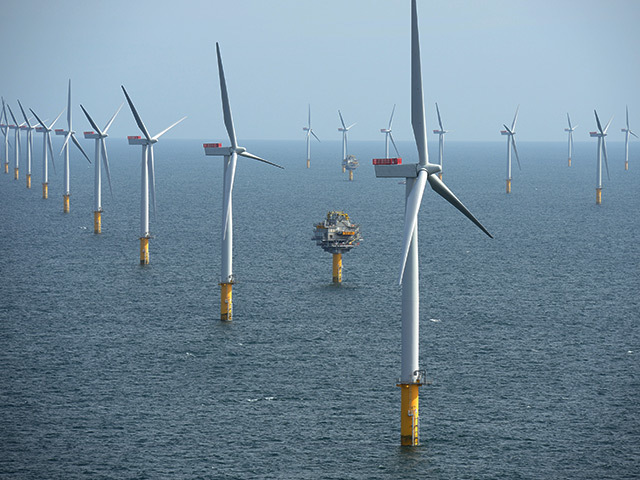Britain’s thousands of wind turbines grabbed their biggest slice of the electricity mix ever in December, sending output from gas-fired plants to their lowest in almost four years.
The renewable technology accounted for 41% of the output last month, according to data from National Grid Plc’s electric system operator. At the same time, the share of gas was 26% — the lowest since March 2020 when the operator started publishing the information.
While increasing output of renewable energy is a boost for the nation’s efforts to meet its net zero emissions target by the middle of the century, it also highlights the increasing reliance on intermittent sources. As recently as November, National Grid asked households to reduce usage amid freezing weather and low wind output, raising questions about the nation’s lack of backup supplies.
The monthly record was helped by mild and gusty weather in the period. On Dec. 21, output in both the UK and Germany hit all-time highs as a storm called Pia swept across northwest Europe.
Power from renewable sources reached record levels in Britain last year, according to energy data analyst EnAppSys. Renewable output hit 129 terawatt-hour over the year, accounting for almost half of Britain’s total annual power mix, mainly due to a rise in wind generation.
The UK is targeting a clean power grid by 2035 and wind energy is central to that plan.
The nation has a very ambitious target of having as much as 50 gigawatts of wind power by the end of the decade, compared with about 30 gigawatts now, and a moratorium on onshore wind parks was lifted recently. To reach that target, the offshore wind industry needs to recover quickly after 2023 was beset by cancellations, delays and impairments.
Fossil fuels like gas need to be phased out but with nuclear power slumping to the lowest in more than four decades last year, Britain urgently needs to map out how it can provide clean backup electricity when renewable output drops.
To help with baseload supplies, Electricite de France SA said on Tuesday that it plans to extend the lives of four nuclear power plants. The technology accounted for 14% of output last month, according to the data from National Grid.
Recommended for you



 © Supplied by Bloomberg
© Supplied by Bloomberg






